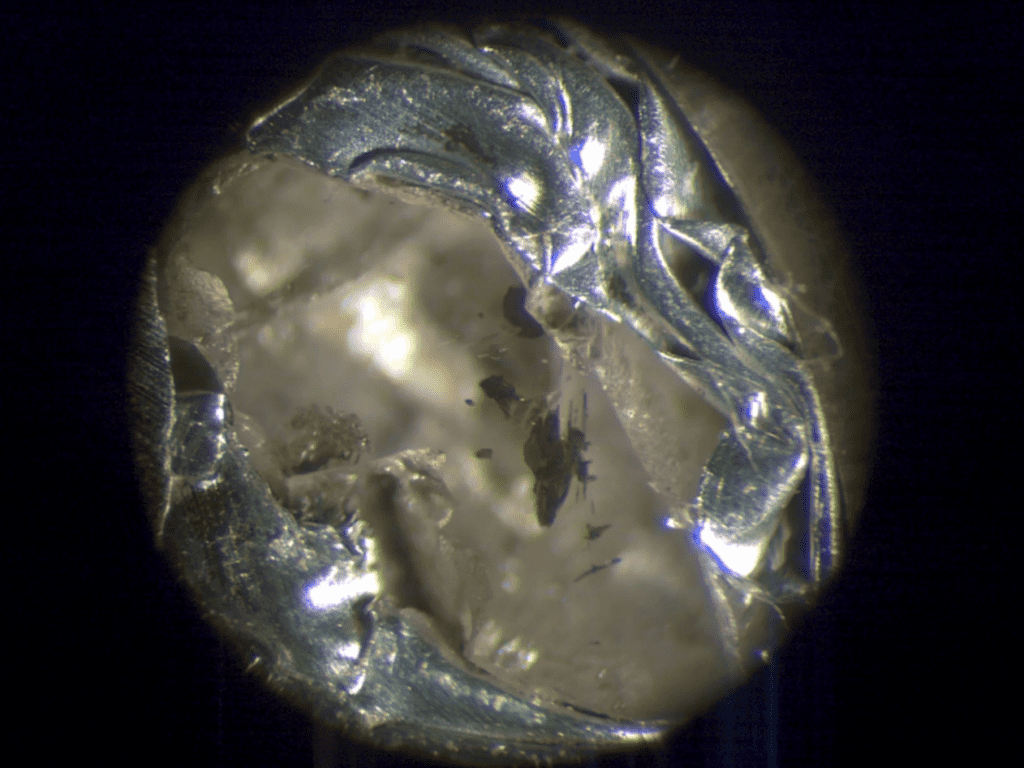
Calcium silicate perovskite (CaSiO3) is widely regarded as the fourth most abundant mineral on Earth but it was only recently that people were able to actually see it intact. That’s because the mineral is thought to form deep inside Earth’s mantle, an area below the planet’s surface, but above the planet’s core. Only after it made its way to the surface, trapped inside a diamond recovered from a South African mine, did we get confirmation that this mineral even exists in a stable form. As such, it provides valuable insight into the processes that govern Earth’s interior.
First time found in nature
“Nobody has ever managed to keep this mineral stable at the Earth’s surface,” said Graham Pearson, a professor in the University of Alberta’s Department of Earth and Atmospheric Sciences, in a statement.
“The only possible way of preserving this mineral at the Earth’s surface is when it’s trapped in an unyielding container like a diamond,” he explained. “Based on our findings, there could be as much as zetta tonnes (1021) of this perovskite in deep Earth.”
The lucky diamond was excavated from South Africa’s Cullinan mine, where incidentally the world’s largest diamond was also found back in 1905. This goes to show that Cullinan is not only a source for material riches but also scientifically valuable, as it provides insights into Earth’s deep core.
“Being the dominant host for calcium and, owing to its accommodating crystal structure, the major sink for heat-producing elements (potassium, uranium and thorium) in the transition zone and lower mantle, it is critical to establish its presence,” the authors wrote in the journal Nature.
Most diamonds form 150 to 200 km below Earth’s surface, but Pearson says the perovskite-containing diamond likely formed some 700 km (435 miles) deep. The scientist thinks the diamond must have sustained 24 billion pascals of pressure — or 240,000 more than the average at sea level.
This important discovery once again highlights diamonds’ important role in preserving material and revealing clues about some of the most mysterious geological processes. The calcium silicate perovskite inclusion — perhaps the first intact sample of this material that we know of — was confirmed with X-ray and spectroscopy tests.
“Diamonds are really unique ways of seeing what’s in the Earth,” Pearson said. “And the specific composition of the perovskite inclusion in this particular diamond very clearly indicates the recycling of oceanic crust into Earth’s lower mantle. It provides fundamental proof of what happens to the fate of oceanic plates as they descend into the depths of the Earth.”
Previously, in 2014, Pearson was behind another milestone discovery which found the first evidence of ringwoodite — Earth’s fifth most abundant mineral — in another diamond.
Scientific reference: F. Nestola et al, CaSiO3 perovskite in diamond indicates the recycling of oceanic crust into the lower mantle, Nature (2018). DOI: 10.1038/nature25972.






